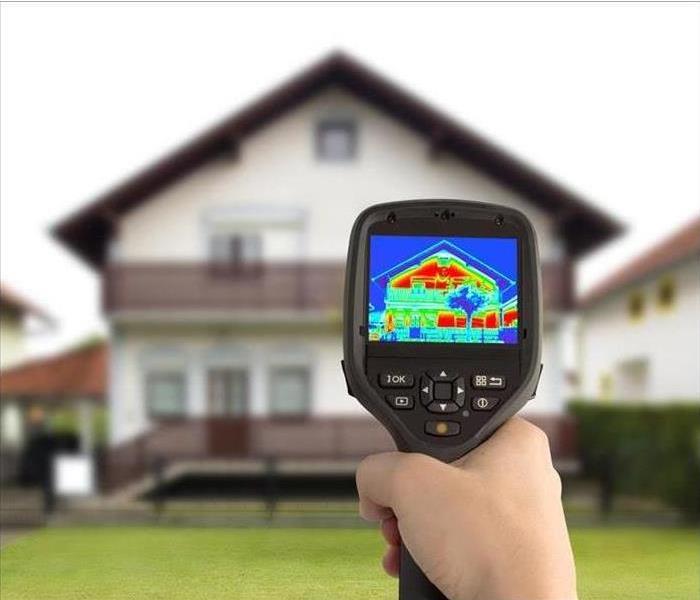How Does Water Get Removed from Hidden Cavities in a Residence?
4/26/2022 (Permalink)
SERVPRO Uses a Variety of Techniques to Detect Moisture and Dry Homes
When appliances malfunction or supply lines in the home burst, hundreds to thousands of gallons of water can pour into a home. This water can travel into wall cavities, down stairwells, and through ceilings into lower levels.
Why are Water Location and Moisture Levels Important?
Seemingly small problems such as leaking pipes under the sink can quickly become large problems if the homeowner is away or sleeping when it happens. Where water removal in your home takes place can depend on the water movement direction. If it ends up behind walls or other hidden cavities, you can end up with more damage in those places than to the original location of the water intrusion. SERVPRO technicians use advanced equipment to locate water and identify moisture levels to ensure proper drying. Water can become trapped in many places in residential properties, including:
- Behind walls
- Cabinets
- Under floors
- Ceilings
- Crawl spaces
What Equipment is Used to Detect Moisture?
Our technicians use several methods when looking for water damage. They do not depend on just one technique. Our crews employ all available resources to make sure the job gets done thoroughly and professionally. One of the tools they use is moisture meters. There are different types, including penetrating and non-penetrating models. We have meters that are precisely calibrated to detect the moisture content of specific types of material.
Moisture sensors are another type of device that gets used. These are often used to probe carpet and padding. The moisture sensors help technicians to discover where the saturation levels are and where the water has migrated in terms of depth. They can provide input into whether the subflooring is damaged.
Thermal imaging cameras, or infrared cameras as they are often called, are convenient for finding hidden moisture. They are portable detection devices that help evaluate moisture levels in building materials. They can also be used to check levels as the drying process is taking place.
What Role Does Controlled Demolition Play?
When water ends up in places like behind a cabinet, letting it dry on its own is not a wise idea. Moisture damages building materials progressively. Secondary damage such as mold can occur in as little as twenty-four hours. Water extraction is key to efficient structural drying, but the techs need to access the areas. Controlled demolition involves removing or modifications to the impacted material, such as drywall, permitting that access. Several methods used to release water and allow the warm, dry air to flow into the cavities are:
- Flood cuts – cutting and removing a portion of drywall. The cuts get made two to three feet above the water level. Drywall and insulation are removed and replaced in those spaces.
- Weep holes – punched into bulging walls and ceilings allow trapped water to be released before they collapse.
- Removing toe kicks – Built-in cabinets have toe kicks, which can be removed to allow access to the space behind the cabinet.
- Baseboard or beadboard drilling – This allows water pooled at the base of the wall to drain.
- Injecti-dry equipment – uses positive or negative airflow into the void for better drying. Often we place tubes inside the baseboard weep holes to force in warm air for positive air pressure or suction out residual water using negative air pressure.
SERVPRO technicians are trained and experienced in making the proper cutaways and drilling holes in drywall, ceiling tiles, painted or wallpapered walls, and mortar joints. When done correctly, these tactics allow for minimal damage, complete water removal, and optimal drying of the structure.
Professional Water Removal Prevents Damage
With water intrusions, it is best to let professionals assess the situation. Just because you cannot see a problem does not mean it does not exist when it comes to moisture and where it can migrate. When SERVPRO mitigates water damage by providing expert water removal and drying procedures, it saves the homeowner time and money. Restoration rather than replacement, when possible saves money. Fast mitigation means less damage to the home and contents, saving you both.
We are water removal experts and can have your home restored to preloss condition before you know it. Do not risk costly repairs due to hidden water damage. Contact SERVPRO of Suffolk/Smithfield/Franklin at 757-934-8404 for quality water removal service. We’re Faster To Any Size Disaster.





 24/7 Emergency Service
24/7 Emergency Service
